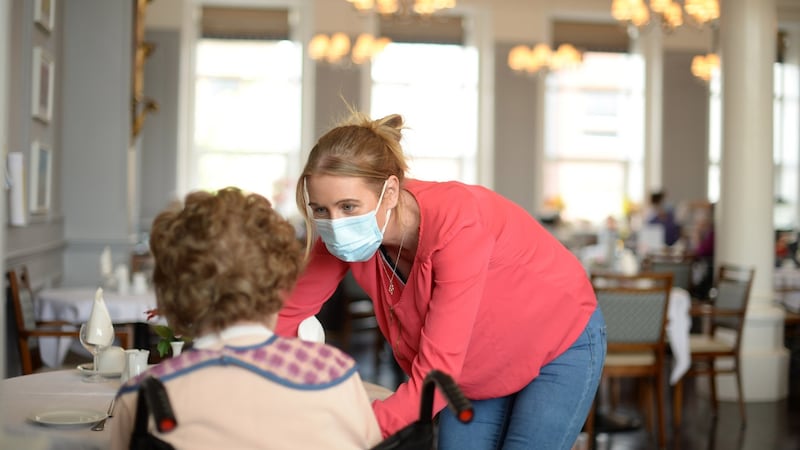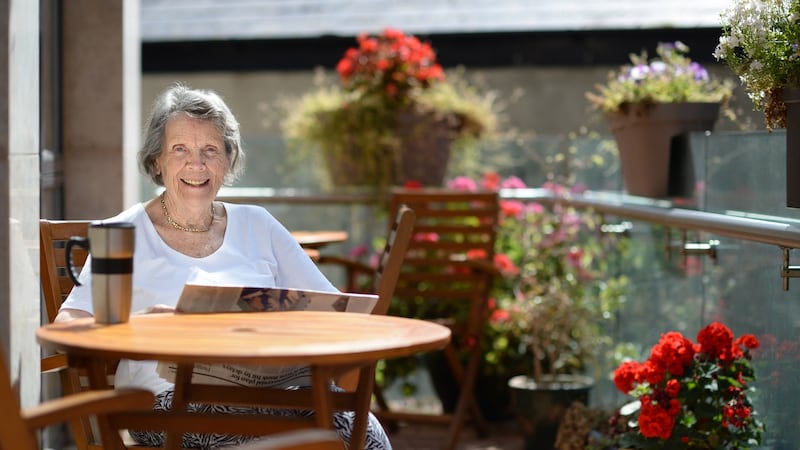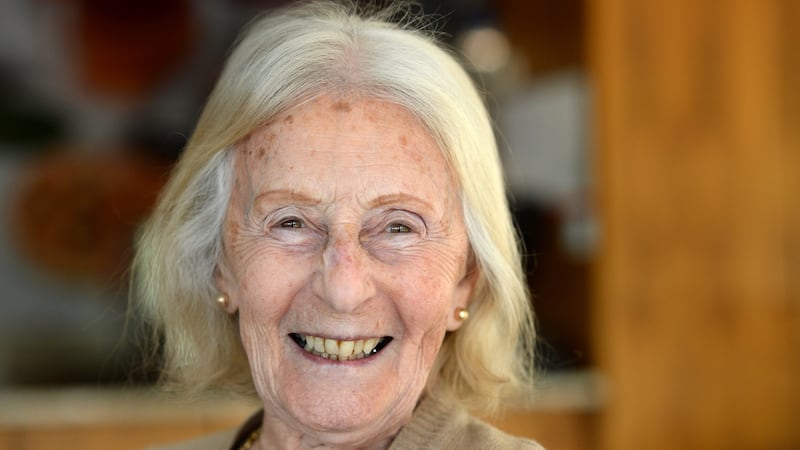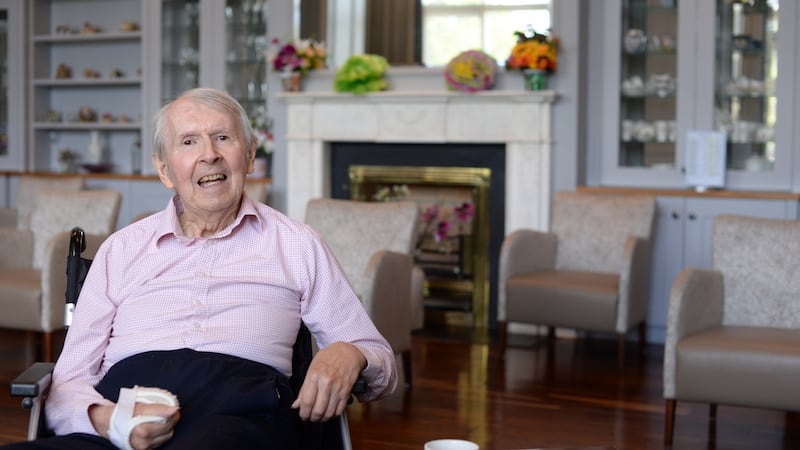“I will never forget the first morning getting that call that somebody had a temperature and the first call to say a staff member was positive. I pulled over and cried.”
Margaret Wafer, director of nursing at Belmont House nursing home in Stillorgan, is recalling when coronavirus hit the facility in April. "We were watching Italy and it was like waiting on a tsunami . . . We wore masks long before anybody else was wearing them. We restricted visiting before [Nursing Homes Ireland] did it. We really had done everything in our power. It was still like being hit by a tidal wave."
Thirty per cent of the 150 residents of Belmont House tested positive for coronavirus, also known as Covid-19, with an 83 per cent recovery rate (a little higher than the average recovery rate in nursing homes, which is 80 per cent). Their first case was diagnosed on April 5th nine days after testing. Many of the cases among staff and residents turned up when the National Public Health Emergency Team organised mass testing later that month. A surprisingly high number of these were asymptomatic. Belmont House has been coronavirus-free since June 12th.

Things have returned to something closer than normal. In the reception floor’s cafe area, residents sit at the window chatting over mobile phones to family members sitting on the other side of the glass. Since June 15th the guidelines have also permitted limited in-person meetings for two selected family members. I see some of these visits too.
All visitors have their temperatures checked at the door and must wear a mask and sit apart. All staff wear masks. Mass has returned too, though the priest can’t give Communion.
Albert Connaughton, owner of Belmont House, thinks that public guidance was "behind the curve". When Belmont had its first suspected case, the HSE weren't yet providing personal protective equipment (PPE) to nursing homes. "So, we bought a lot of our own PPE and staff nursed that lady with full PPE . . . Mask, visor, gloves, full surgical gown, shoe covers."
Frightening
Working with PPE is very labour-intensive, he says, particularly given how warm it was last spring. Wafer notes that it was also frightening for some residents to see staff dressed like that. “Sometimes we have to stand back and move the mask and say, ‘It’s me’.”
They made other changes. As soon as they had their first suspected case, residents and staff were divided by floors that were not to mix. All entertainment activities took place on the corridors (now they’ve returned to the dayrooms below, but the residents of different floors are still kept separate). They had to compensate for staff who were out sick with the virus, and there was a continuous need to keep health authorities and families informed.
Connaughton believes the virus has highlighted the need for better general support for private nursing homes from the State. “It’s like when [they] farm out these beds, that’s the end of it, they’ve done their job . . . At a time like this, you really do need the support . . . The HSE did catch up. And when nursing homes did have outbreaks, we did get plenty of PPE [but] they were slow off the mark . . . They were focusing on the hospitals.”
Neither Connaughton nor Wafer is confident that they’ll see the end of precautionary coronavirus measures for some time. Wafer worries they may have to deal with a resurgence of the virus and flu at the same time when winter comes.

Marie-Thérèse Farrell
Connaughton and his daughter Jane, Belmont House’s social programme manager, introduce me to some of the residents. Ninety-two-year-old Marie-Thérèse Farrell is out on the cafe balcony with a huge mug of coffee and a copy of the paper.
As things currently stand the balcony is usually taken up with visiting families having window visits, so sitting here again is a bit of a novelty for her. She likes to sit here looking at the plants and talking to the bees (“There’s something about bees!”).
A former dressmaker, Marie-Thérèse introduced “the first strapless evening dresses” to Dublin. She moved to Belmont 19 months ago because she had become nervous about living alone. She knew the place well because her late husband spent his last few years here, and she repeatedly praises the staff. She has seven children, “four in the parish” and is in regular phone contact with them.
Marie-Thérèse has been getting window visits and, more recently, in-person visits from her family. “But you can’t gossip at a distance,” she says.
She prefers the intimacy of the telephone and enjoys reading in her room (She’s ploughing through six Peter Somerville-Large books). She also misses some residents who are on other floors. “I picked up one of the ladies and I miss her dreadfully . . . Hilary is her name, a lovely Jewish lady. I found her company enchanting.”
What was it like for her when the crisis hit? “The staff came in looking like snowmen, completely covered.”
She thinks they did a very good job under difficult circumstances. Was it difficult for her? She shakes her head. "My generation are not touchy-feely. The first time I came across this hugging and kissing was at a wedding in France. I couldn't make out what they were doing. We now indiscriminately hug strangers, nearly. It's just regressing to what it was."
Maria Little
Siobhán Hickey is having a socially distanced visit with her mother Maria Little. Maria moved here with her husband in January 2018 after she began showing signs of dementia (she was later diagnosed with Lewy body dementia) and was no longer able to care for her more physically ill husband (he died last year).
Maria eventually adapted well to Belmont. Always a social person, she led the daily rosary and liked to help less able-bodied residents. “Normally there was no point in ringing Mum between nine and six in the day because she’d say, ‘I’m too busy to talk to you’.”
It has been very difficult for Maria since early March when visits were restricted. It became even more difficult after the mass testing revealed that Maria had the virus and needed to be isolated. Her only symptom was a high temperature. “When somebody’s sick, all you want to do is hold their hand and say, ‘Look, I’m here.’ So that was really hard.”
The family was able to maintain phone contact and the staff kept them well informed but being more isolated was very difficult for Maria. She would often be upset on the phone. To keep up some sort of contact, Siobhán would drive to the front of the building and wave in the window to her. “All I wanted to do was give her a hug.”
Did Maria understand what was happening? “She understood that there was a virus to the extent that when they told her she had a urinary tract infection, she was worried that everybody else was going to catch that from her . . . [Being isolated] really shook her confidence and her sense of purpose . . . Now she doubts herself all the time. And she feels she is, in her own words, ‘breaking the rules’.”

Thelma Moher
Eighty-five-year-old Thelma Moher is happy to meet me because someone with my surname was born on the same day in the same hospital as one of her sons. She's a little disappointed I'm not him. She moved here about a year ago. "My husband had died and my children were all abroad. I had come here on convalescence when I wasn't well and I sort of got to know the place a bit so when asked where I'd like to go, I said here."
She speaks to her sons on the phone every day. She likes the staff and likes the company. She says that little changed for her in the lockdown. Though it recently affected her when a friend planned to take her on an outing. “We had a great old day planned. We were going to get our hair done, and then we were going to get some lunch, have a look at the shops and have a cup of coffee. The old things we used to do . . . It was one of my sons on the phone who said, ‘Mum you’d better go and ask them can you go.’” She sort of sighs and laughs at the same time. “And they went ‘No.’ I was disappointed that night . . . I should have realised I wouldn’t be allowed out.”

John Colbert
Eighty-two-year-old John Colbert has a chemical science background and, as a subscriber to Scientific American magazine, is very informed about coronavirus. He tells me how the Covid-19 molecule attacks the lungs and the status of various vaccines.
John uses a wheelchair. He had a stroke at the age of 57 after which he and his wife Betty moved back to Ireland after decades in America, but he is a remarkably upbeat person. "I wouldn't have believed earlier in life that I could still enjoy life so much at 82," he says. "It's because of family support. And the grandchildren. It makes a big difference."
What was it like for him over the course of the pandemic? “I’m very complimentary to the staff because we’ve sailed through the lockdown . . . I know there must be a lot of frantic activity behind the scenes. Of course, we were under more restrictions. For instance, this day room is reserved for the fourth floor. And when visitors come in, they’re wearing those masks, but the masks are in a good cause.”
He’s pleased to be able to have face-to-face visitors again. Previously he had window visits where his family would sit outside and they’d communicate by phone. Was that strange? “No. As Betty said, ‘I can’t see much difference in this. We can still talk.’ She’s got a very positive outlook and that helps a lot.”
It was his decision to move in here in February of last year. He'd had a bad fall and didn't think it was fair to expect Betty to spend every hour watching him. It was the best decision he ever made, he says. He does a daily crossword, participates in activities and spends time reading Wilbur Smith, Lee Child and googling things on his iPad. "I tell my grandchildren that in my lifetime I've seen a whole library disappear into an iPad."
Does it worry him when he reads up on the virus? It does not. In fact, as I discover later, John had the virus himself albeit with mild symptoms. “I have the sort of personality that I never worry about anything.” He laughs. “Maybe that means I’ve no imagination. I kind of have this strange assumption that everything’s going to be okay in the long run.”










